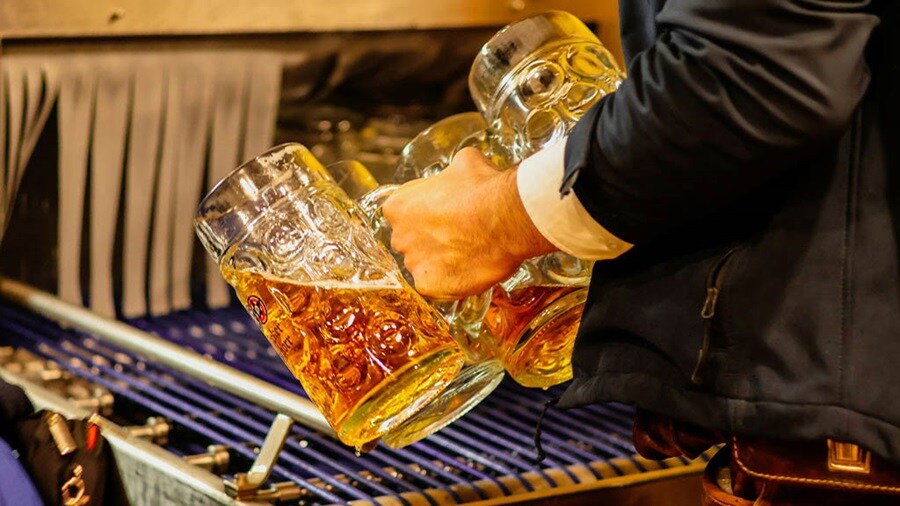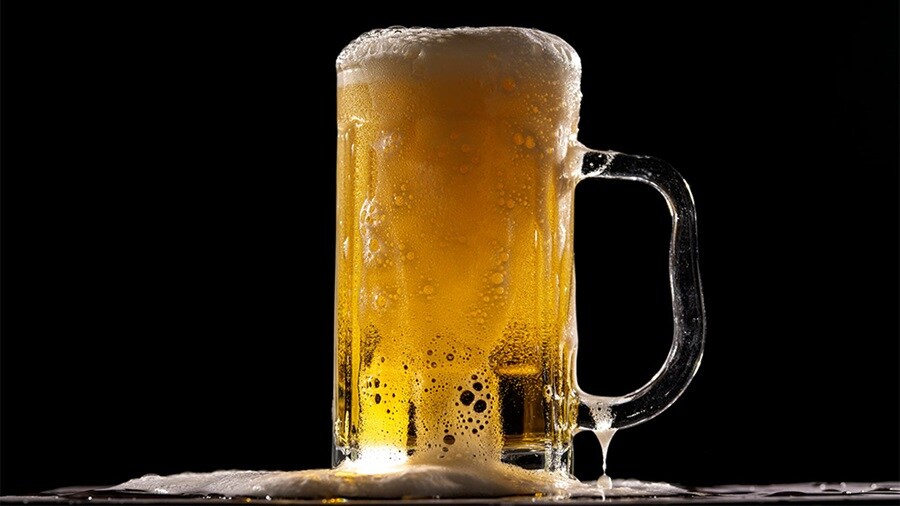Across Europe, the beer industry is undoubtedly big business all year round (generating almost €160 billion in revenue in 2024), but certain events on the beer calendar bring peaks for companies to capitalise on – and Oktoberfest certainly falls into that bracket.
From mid-September to early October, Munich holds its annual celebration of traditional Bavarian culture, with food, music, dancing, and – of course – beer on offer to the millions of visitors descending on the city.
However, Oktoberfest has become far more than just the event in Bavaria, as beer-selling establishments globally look to benefit from the festivities. And the data suggests they’re wise to do so, with OnPrem Insights revealing that Oktoberfest beers command as much as 67% of beer sales at venues during the months of September and October.
So while Oktoberfest itself sees a remarkable 7 million litres of beer being poured, it’s piece of a much larger puzzle. And that much is true for the beer industry as a whole, as the trends of the event serve as a window to both the challenges and opportunities facing beer manufacturers and sellers across the globe. From changing consumption habits to new logistics challenges, it’s safe to say that the beer business today looks very different from a decade ago.
The rise of non-alcoholic beer
One of the most prominent themes in the beer industry over the past 10 years has been the rise in popularity of non-alcoholic beer. Once an extremely niche market, alcohol-free beer now represents a significant 6-7% of sales in Europe according to The Brewers of Europe – roughly around 1 in 15 pints.
Oktoberfest in Munich isn’t exactly famed for being a celebration of sobriety, but the 2024 event saw every single tent offer non-alcoholic alternatives to attendees. This has been driven by younger generations being more health-conscious than ever, and brewers now need to be part of the movement or risk being left behind.

Germany’s federal statistics office Destatis reports that non-alcoholic beer sales are up 109% since 2013, while beer sales slumped to their lowest level in more than 30 years – down by 6.3% in the first half of 2025 compared to the same period last year.
The taste for non-alcoholic beer has certainly given brewers plenty to think about on the logistics front, too, as they present distinct challenges over their alcoholic counterparts. As non-alcoholic beer is mostly sold in bottles or cans rather than kegs, they bring slightly different supply chain challenges – including managing a shorter shelf life, fragmented distribution to establishments away from bars and pubs, and cross-border labelling challenges due to legalities.
Demand forecasting can also pose problems in terms of balancing peaks and troughs, with brands looking to capitalise on seasonal events such as ‘Dry January’ but having to manage slower periods and the potential waste that could come with it.
This volatility means non-alcoholic beer producers must design supply chains that are flexible, data-driven, and capable of ramping up or scaling down quickly as market circumstances dictate.
Paying the price for a pint
Oktoberfest continues to be a hugely popular celebration in Germany and beyond, but one area of negative press that it regularly faces is how much beer costs for attendees. Since 2002, the price of a stein has more than doubled from a minimum price of €6.30 to an eye-watering €13.60 in 2024.
That cost is seemingly only continuing to go in one direction as well, as a stein at the 2025 event will set you back at least €14.50 – representing a rise of just over 3.5% from the previous year.

A number of factors have contributed to these rises, including higher costs for raw materials like barley and hops, more expensive packaging (glass and aluminium), surging energy bills, rising transport and labour costs, and increased alcohol duties – all of which have been passed on to the consumer.
At the same time, big brewers have leaned on pricing power to protect margins despite softer consumption, meaning consumers are paying more even as they drink slightly less. For example, brewer AB InBev reported a sales dip of 2.4% in Q3 2024, but revenue grew by 2.1% in the same period.
From a logistics perspective, these pressures mean supply chains are carrying higher costs at every stage, from sourcing grains to moving the finished product to retailers. For brewers and sellers, this makes efficiency critical: optimising transport routes, balancing on-trade and off-trade distribution, investing in lighter or returnable packaging, and using smarter demand forecasting to avoid costly overproduction or shortages.
Oktoberfest undoubtedly shines a spotlight on the challenges and opportunities facing the global beer industry, and getting the logistics strategy right can be the difference between success and failure during event season and beyond.
Efficient, flexible, and data-driven supply chains are no longer optional – they are essential for navigating price pressures, seasonal peaks, and ever-evolving market demands.
Be ready for evolving markets to go all the way! Discover more with Maersk Logistics Insights, and learn about Logistics Services, or for more logistics trends and insights, read and download The Logistics Trend Map.
How can logistics help you grow?
Trade is the ultimate connector, expanding businesses across oceans and borders. How can companies stay relevant, predict trends, adjust to their customers’ needs and, at the same time, expand?
Learn more about how Maersk can help with growth.
Sign up to The Logistics Pulse newsletter
You did it, welcome onboard!
We're sorry, but there was a problem sending your contact request.
Please review the form fields and ensure all required information is provided correctly. If the issue persists, please contact our support team for further assistance.
Sign up to The Logistics Pulse newsletter
Receive our insights directly in your mailbox by signing up through this form and enter a world of truly integrated logistics. Get inspired by our selection of articles that help you navigate supply chains, understand industry trends, and shape your logistics strategy. You can unsubscribe anytime.
I agree to receive logistics related news and marketing updates by email, phone, messaging services (e.g. WhatsApp) and other digital platforms, including but not limited to social media (e.g., LinkedIn) from A. P. Moller-Maersk and its affiliated companies (see latest company overview). I understand that I can opt out of such Maersk communications at any time by clicking the unsubscribe link. To see how we use your personal data, please read our Privacy Notification.
By completing this form, you confirm that you agree to the use of your personal data by Maersk as described in our Privacy Notification.













